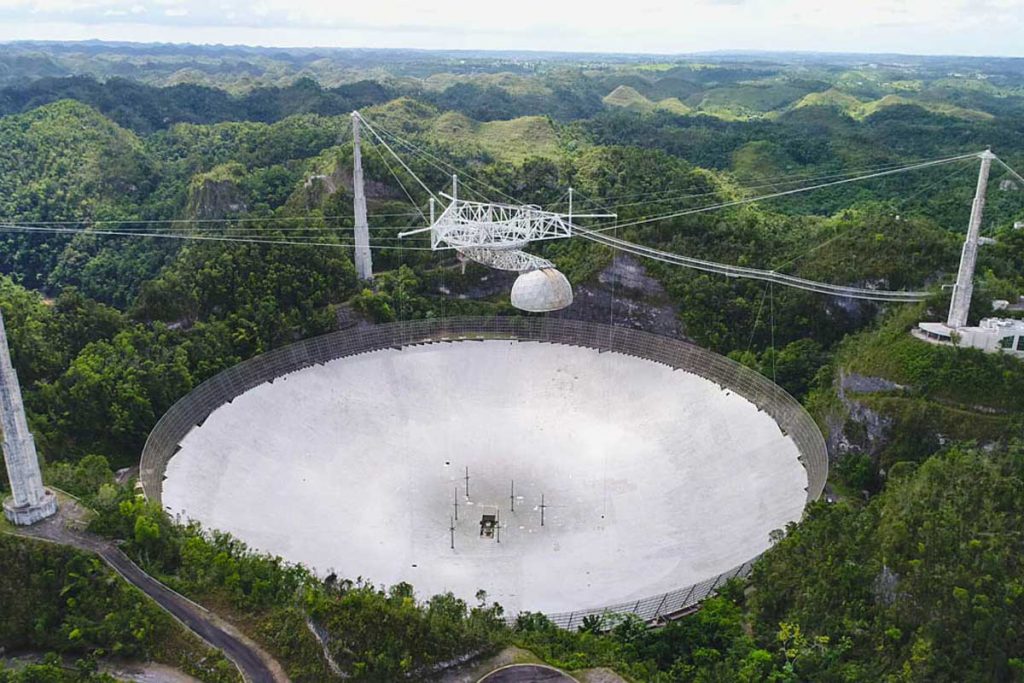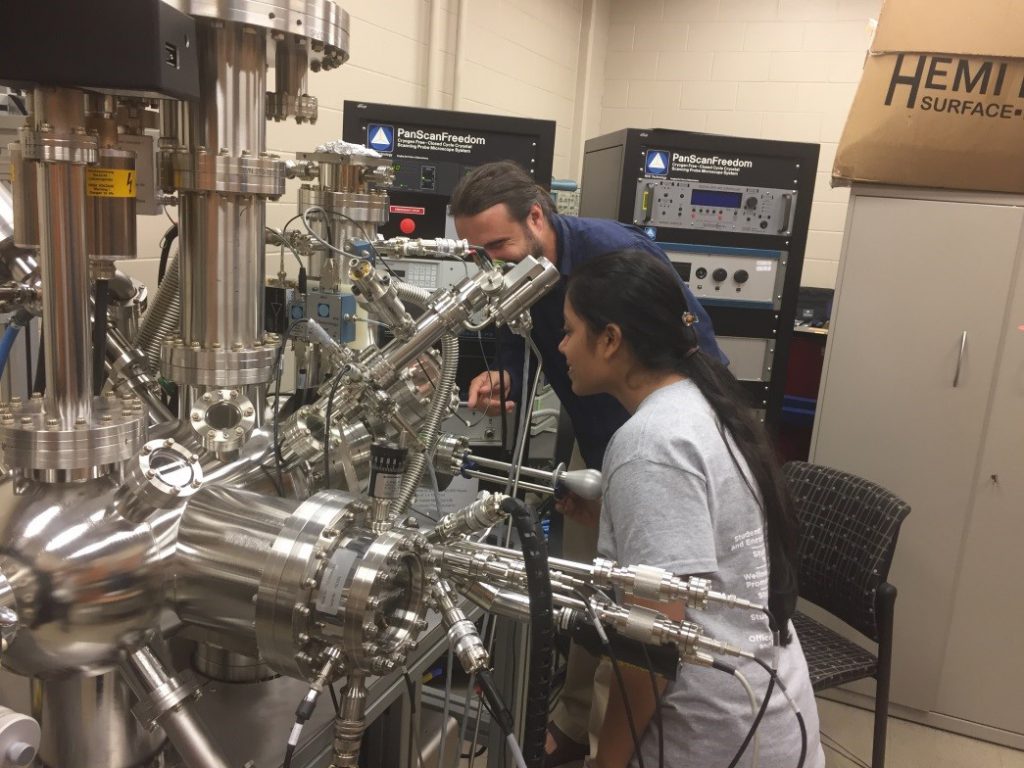Facility’s staff has helped international scientists do their work in planetary science, space and atmospheric science, and radio astronomy.
BY ZENAIDA KOTALA | APRIL 5, 2019

UCF celebrates its first anniversary this month of operating the Arecibo Observatory in Puerto Rico.
The observatory is the first national research center that UCF has led. It is home to one of the world’s most sensitive Incoherent Scattering Radar systems, which detects microscopic fluctuations due to thermal motions in the ionosphere, and one of the largest aperture radio telescopes in the world. The instruments give hundreds of national and international scientists the opportunity to make observations and conduct research not easily done through other means. The facility has a science staff that conducts research and helps international scientists do their work in the area of planetary science, space and atmospheric science, and radio astronomy.
UCF’s story in Arecibo began in April 2018, when the university received a $20 million National Science Foundation grant to operate the facility in collaboration with its partners Universidad Ana G. Mendez (formerly UMET) and Yang Enterprises Inc. Since then the facility has undergone some renovations, its staff has helped conduct research linked to discoveries in gravitational waves and near-earth asteroids, among others.
That’s despite some unexpected obstacles, such as Hurricane Maria, which slammed into Puerto Rico in September with winds of more than 155 mph. The storm caused thousands of deaths and destruction across the island, including damage to several areas of the observatory. The NSF awarded the facility $2 million to make repairs, many of which have been completed or are underway. There are also plans to upgrade some of the instruments to expand the scope of work over the next few years.
The facility held Arecibo Observation Week to celebrate its 55th anniversary. The staff hosted a series of activities Oct. 28-Nov. 2 that combined virtual, on-site and off-site outreach activities aimed at engaging both the worldwide scientific community as well as the general public with the important contributions of the observatory.
The staff also held a Pathways to the Future workshop that brought together planetary scientists, radio astronomers and atmospheric scientists to discuss and exchange ideas with Arecibo engineers and scientists. More than 100 people representing more than 40 institutions discussed the status of the facility, the potential upgrades that could help boost the impact of the observatory, and began mapping out a shared vision of how to best use Arecibo for space-related research.
Arecibo also contributed to a host of scientific findings including the:
- discovery of the first ever repeating Fast Radio Burst
- discovery two pulsars that undergo a “cosmic vanishing act”
- confirmation from NASA’s OSIRIS-REx mission that data collected at Arecibo from observations of asteroid Bennu properly predicted the asteroids shape.
Other successes include:
- a $20 million NASA grant to continue work in the area of asteroids
- hosting hundreds of children and college students visiting Arecibo as part of several educational outreach programs
- the launch of the New Arecibo Message – global challenge, which has drawn dozens of teams from around the world to compete.
Despite the hurricane, which drove tourists and residents of Puerto Rico away from the island in 2018, the observatory has seen a steady increase of visitors as scientific work continues to thrive.


